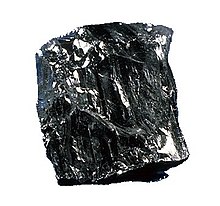

The Geology of Pennsylvania consists of six distinct physiographic provinces, three of which are subdivided into different sections. Each province has its own economic advantages and geologic hazards and plays an important role in shaping everyday life in the state. From the southeast corner to the northwest corner of the state, they include: the Atlantic Plain Province, the Piedmont Province, the New England Province, the Ridge and Valley Province, the Appalachain Province, and the Central Lowlands Province.[1]
A majority of the rocks in Pennsylvania exposed at the surface are sedimentary and were deposited during the Paleozoic Era. Almost all of the metamorphic and igneous rocks are confined to the southeast portion of the state. A total of four orogenies have affected the rocks of the Commonwealth including the Grenville orogeny, the Taconic orogeny, the Acadian orogeny, and the Appalachian orogeny. The Appalachian event has left the most evidence and has continued to shape the landscape of the state. The Pennsylvania terrain has also been affected by continental rifting during the Mesozoic era.[2]
Pleistocene glaciers have also repeatedly visited the state over the last 100,000 years. These glaciers have left some evidence and carved out much of the landscape of the northern tier of the state.[2]
A rock with high economic value from Pennsylvania is anthracite coal. Before mining began, there was an estimated 22.8 billion tons of anthracite in Pennsylvania. In 2001, 12 billion tons still remained in the ground, most of which was not economically feasible to mine.[3] American geologists recognized the importance of Pennsylvania's coal region and named the Upper Carboniferous Period the Pennsylvanian Period because of the abundance of coal in the state. Despite this, Celestine was proposed as the state mineral in 2002. The proposal however, was not approved by the state legislature.[4][5]
Pennsylvania is also home to the famous Drake Oil Well in Titusville which helped give rise to the modern oil industry and two brand name motor oils, Quaker State (now owned by Royal Dutch Shell) and Pennzoil. Pennsylvania also has reserves of natural gas from both deeply buried source rocks and coal-bed areas.
- ^ Sevon, W.D. (2000). Physiographic Provinces of Pennsylvania, Map 13. Pennsylvania Geologic Survey. Harrisburg, PA.
- ^ a b Schultz, C.H. ed. (2002) The Geology of Pennsylvania. Special Publication No.1. Pennsylvania Geologic Survey and Pittsburgh Geological Society. [1]
- ^ Edmunds, W.E., (2002), Coal in Pennsylvania (2nd ed.): Pennsylvania Geological Survey, Educational Series 7, p. 17.
- ^ Pennsylvania Geological Survey: Rocks and Minerals
- ^ Edwin, C., (2003). Celestine, the Proposed State Mineral. Pennsylvania Geology, Pennsylvania Geological Survey, Harrisburg, PA. V 33 n 1.